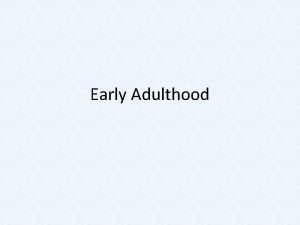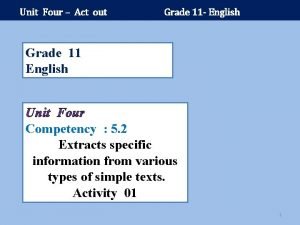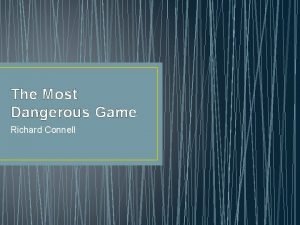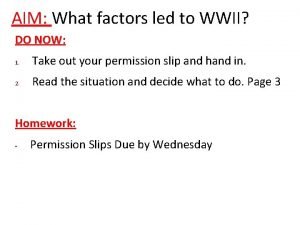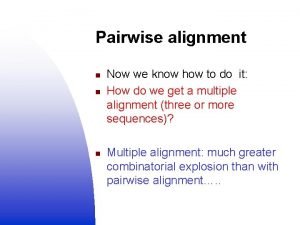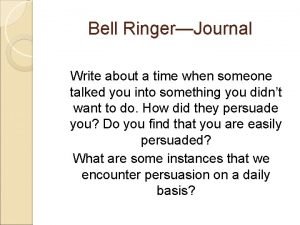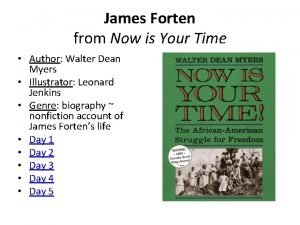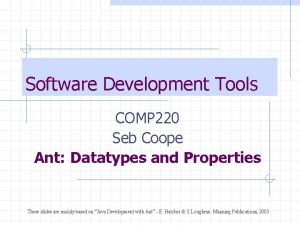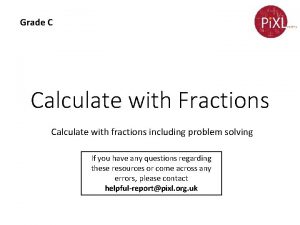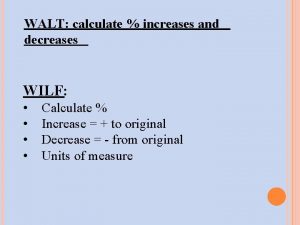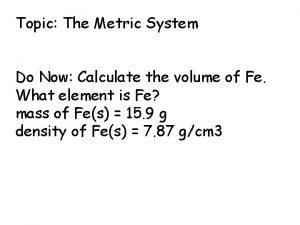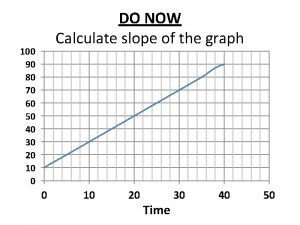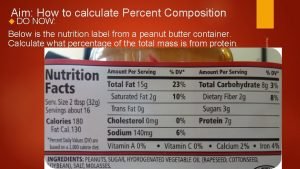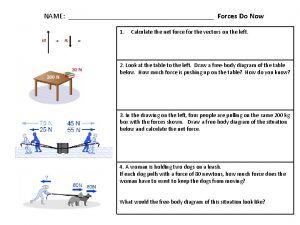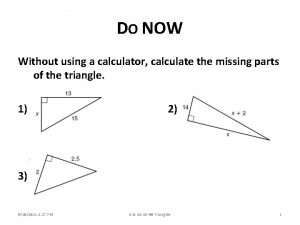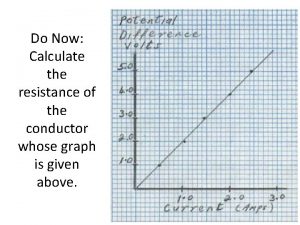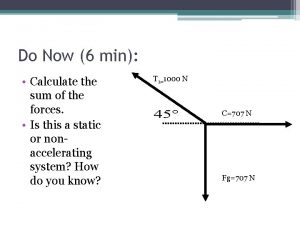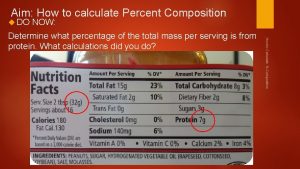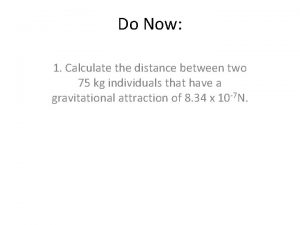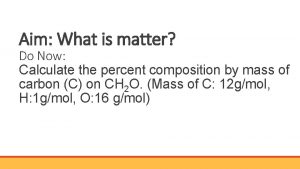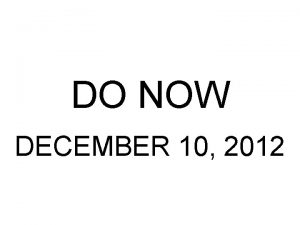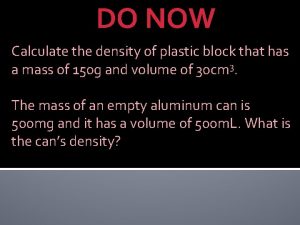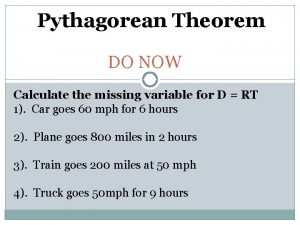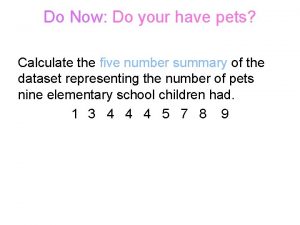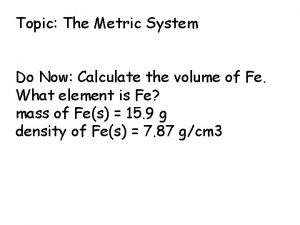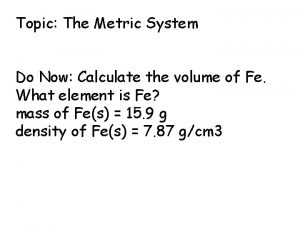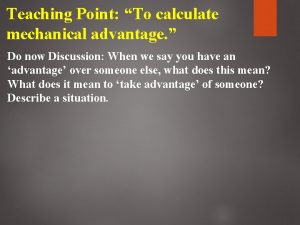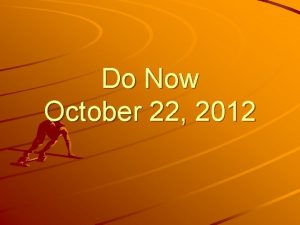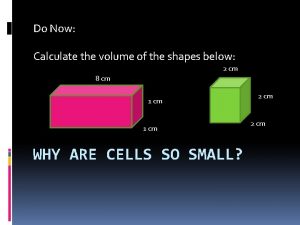DO NOW l l l l l Calculate

























- Slides: 25

DO NOW l l l l l Calculate Monica’s BMI: On the cheerleading team Junior at ACIT 5 foot 2 inches Scored 12 on the V sit and reach Culinary major 4 th place at the Volleyball-a-thon Weighs 128 lbs Scored 27 on the pacer test

Monica’s BMI is…. . FORMULA: weight x 703 / Height squared = 23. 41

Planning a Personal Activity Program Chapter 12 Lesson 3

Fitness Goals l Maximum l Resting l Target Heart Rate (MHR) Heart Rate (RHR) Heart Rate (THR) http: //app. discoveryeducation. com/search

What do you expect your maximum heart rate to be?

What do you expect your resting heart rate to be? Why?

What is a normal resting heart rate (pulse rate)? l l l l Newborn baby - 120 to 160 Baby aged from 1 to 12 months - 80 to 140 Baby/toddler aged from 1 to 2 years - 80 to 130 Toddler/young child aged 2 to 6 years - 75 to 120 Child aged 7 to 12 years - 75 to 110 Adult aged 18+ years - 60 to 100 Adult athlete - 40 to 60

To find your target heart rate you will need the following data: l A) Maximum Heart Rate=(220 – your age = MHR) l My MHR = _________ l B) Resting Heart Rate=(count pulse for 10 secs and then multiply by 6) l My RHR = _________

Enter the above data in the following two formulas and solve. l l (60%)= ______ - ______ = ______ x. 6 = ______ + ______ = ________ MHR RHR LOWER LIMIT (85%)=______ - ______ = ______ x. 85 = ______ + ____ = ______ MHR RHR UPPER LIMIT * The Karvonen Method of calculating THR is one of the most effective methods to determine target heart rate because it takes into account resting heart rate.

My target heart rate is: l ______ to lower limit ______ upper limit

How do you expect your heart rate to change when you exercise?

If you predict that it will increase, how much do you expect your heart rate to increase when you exercise?

Types of Activities Aim for 60 minutes! Moderate Intensity - counts towards your daily activity! (walking, climbing stairs, chores, yard work) Aerobic Activities- these raise your heart rate - Aim for three 20 minute sessions each week - Cycling, power walking, dancing, running


Different Training for Different Reasons… Strength Training l develops muscle tone l 2 or 3 sessions/wk of 20 -30 min; one day off between sessions l Boosts metabolism Aerobic Training l Strengthens your heart muscle l Lowers your resting heart rate

Circuit Training l move from one exercise to the other with minimal rest time in between l Ultimate work out for fat loss Pilates l Slow movements and holds that utilize the core muscles

Stages of a Workout l Warm-up: gentle cardiovascular activity that prepares the muscles for work increases blood flow, delivering oxygen to muscles dynamic stretch!

Workout: part of an exercise session when you are exercising at your highest peak. F. I. T. T. Formula What is it? ?

F = Frequency At least 3 sessions/week. Give your body time to rest I = Intensity - within target heart range - muscle strain, but not pain T = Type vary activities to build different elements T = Time - cardio: t. h. r for at least 20 minutes - strength: 20 -30 minutes - flexibility: 10 minutes

Cool Down: low-level activity that prepares your body to return to a resting state l Allows your heart rate, breathing and body temp. to return to normal gradually. l Prevents soreness

Lets check our heart rate… l Complete our Heart Rate line graph

On the back of your graph I want you to answer the following questions: l What do you think affects how your heart rate changes when you exercise? l How do you think your heart rate, immediately after exercising, would change if you got more or less exercise? l How do you think your resting heart rate would change if you got more or less exercise?

Planning for lifelong fitness…

l Explain to me how a person who went to the gym for 45 mins increased their fitness level more than a person who went to the gym for an hour and 45 mins?

l Explain how 2 people both jogged 2 miles in twenty minutes and how one person reached their target heart rate and the other person fell short?
 Now i see it now you don't
Now i see it now you don't Tumnus
Tumnus Jerusalem then and now
Jerusalem then and now Early adulthood milestones
Early adulthood milestones Dialogue grade 11
Dialogue grade 11 Teori here and now
Teori here and now News naver
News naver Where is captain nielsen from
Where is captain nielsen from Night of the long knives cartoon
Night of the long knives cartoon Shh-hh he'll be quiet now maybe analysis
Shh-hh he'll be quiet now maybe analysis Agriculture now and then
Agriculture now and then Nnn now
Nnn now Now write a slogan using bandwagon techniques.
Now write a slogan using bandwagon techniques. James forten from now is your time
James forten from now is your time Stop it now modules
Stop it now modules Shows only my teeth like a snake bare fangs
Shows only my teeth like a snake bare fangs Smsu college now
Smsu college now Nowtra
Nowtra Answer this on your notebook
Answer this on your notebook Features of authoring tools in multimedia
Features of authoring tools in multimedia I will be still know you are god
I will be still know you are god My garden's looking lovely now that daffodils are in flower
My garden's looking lovely now that daffodils are in flower Now dream
Now dream Good evening ladies and gentlemen. we are now
Good evening ladies and gentlemen. we are now How often do you play it
How often do you play it Toolscomp
Toolscomp



